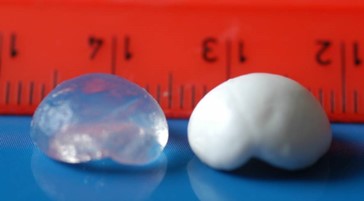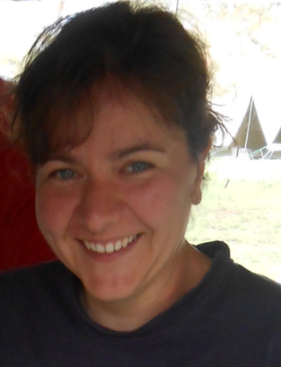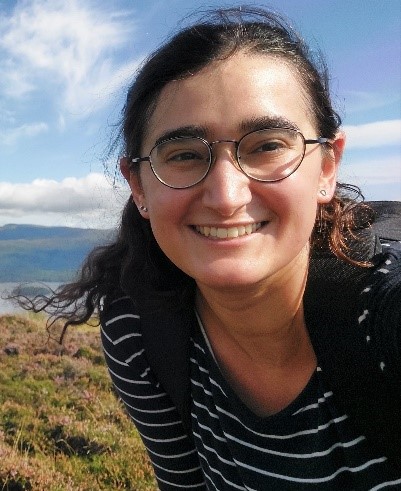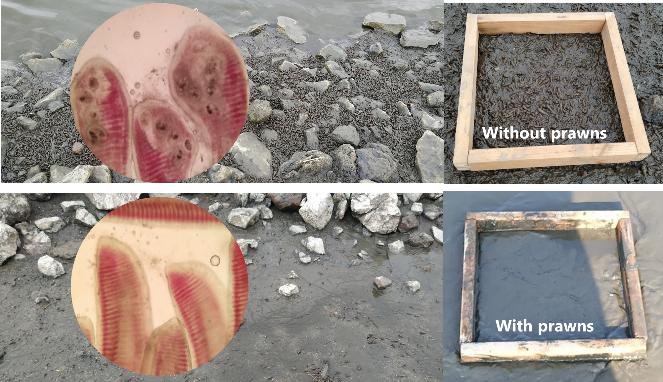シンポジウム Symposium
十脚甲殻類の侵略的な外来種とザリガニ類を中心とした保全研究ー地中海地域を例として
Conservation study on crayfish and invasive alien decapod species : case study on species from the Mediterranean region
日程:2023年10月14日(土)
シンポジウム趣旨:日本甲殻類学会は外国会員と国外からの大会参加も増えて国際化が進んでいる。この動きを加速するために欧州の甲殻類学の専門家による講演を行う。また日本甲殻類学会は研究領域と会員層の多様化も進んでいる。新しい領域である希少な淡水甲殻類保全を一般市民が実践する例を紹介する。
シンポジウム企画者:川井唯史
I. 招聘講演
1.ネジェブ・ベン・グリオン大学 アミル・サジ教授
ザリガニにおける胃石とバイオミネラリゼーションと関連する遺伝子発現
(発表内容)甲殻類は脱皮に伴い成長しますが、ザリガニ類では脱皮に伴い胃の中に炭酸カルシュウムの結石である「胃石」が発達する。この機能は脱皮直後に不足しがちなカルシュウムを始めとしたミネラルを貯蔵し、外骨格に供給することで脱皮時に軟化した甲羅の速やかな硬化を助けます。ザリガニの脱皮に伴うトランスクリプトームに基づき、外骨格の表皮と胃石のタンパク遺伝子変換を分析し、甲殻類における表皮と胃石の構造タンパク質のための解析を行いました。いくつのタンパクは表皮構造と炭酸カルシュウムのバイオミネラリゼーションのイオン移動の要点として研究しています。胃石は他にも脱皮に伴うミネラリゼーションの指数化(MMI)にも役立ち、さらにこの指数はバイオミネラリゼーションの関連タンパクと分子の関係性の研究にも役立ちます。

アミル・サジ教授は甲殻類の基礎生理やこれを生かした甲殻類養殖の高度化で国際的に有名であり、各多くの業績や国際的な研究活動や国際学会での招聘講演も数多くあり、国際甲殻類学会からはTCS Excellent Research Awardも受賞しています。また無脊椎動物の繁殖と発育の国際学会であるInternational Society for Invertebrate Reproduction
and Developmentの学会長と副学会長も歴任されています。

ザリガニ類の胃石
Gastroliths and biomineralization related gene expression in crayfish
Amir Sagi
Department of Life Sciences, Ben Gurion University of the Negev, Beer Sheva, Israel
National Institute for Biotechnology in the Negev, Ben-Gurion University of the Negev, Beer Sheva, Israel
Abstract: Having a rigid exoskeleton, crustacean growth processes demand a repetitive molting cycle. During the molt cycle crustaceans form their cuticular structures and many crustacean species, such as crayfish, develop functional structures such as gastroliths, in a specific timing, making them ideal structural biology study organisms. Gastroliths are calcium storage organs deposited on either side of the stomach, growing along the molt cycle, and collapsing into the stomach at ecdysis to serve as mineral sources for calcification of the exoskeleton after molting. The formation of such structures involves growth of the organic matrix including chitin and cuticular proteins, and mineral deposition. The process of gastrolith development in crayfish involves the construction of an extracellular chitinous scaffold over which mostly stabilized amorphous calcium carbonate is deposited. These structures involve a wide repertoire of structural and functional proteins including ion transporters. Based on a molt-related transcriptomic library from crayfish, cuticular and gastrolith protein encoding-genes were mined using a multigenic binary patterning approach developed specifically for the study of structural proteins in crustacean cuticle and gastroliths. Several proteins were studied with respect to cuticular structures and ion transport into exoskeletal biomineralization sites of calcium carbonate.
The gastroliths also serve as an indexed tool to monitor crayfish molt cycle through a Molt Mineralization Index (MMI). Using MMI values the molt cycle could be precisely timed and the molecular background behind growth and biomineralization could be studied. This way molt related transcriptomic libraries were constructed and functional genomics tools such as RNA interference (RNAi) and CRISPR applied to discover the function of relevant proteins. RNAi manipulations significantly affected molt cycle outputs suggesting important functions to several cuticular proteins and ion transporters. Precise functional genomic research and applications of genome editing will contribute to further understanding of the physiological background behind the extremely efficient biomineralization processes in crayfish.
2.フィレンツェ大学博物館 ギアナ・インセンティ博士
地中海域における外来十脚目甲殻類:3つのケーススタディ
(発表内容)海産の侵略的外来種は固有の生態系に大きな負の影響を与え、これが人間生活にも悪影響を与えることもあります。地中海に侵入した海産の外来十脚目のCallinectes sapidus、Charybdis longicollis、Percnon gibbesiを例ケーススタディ例として、地中海の在来生態系と経済面への影響についての検討例を紹介します。

Gianna is a Decapod taxonomist working on marine and freshwater species and habitats. She has a M.Sc. in Natural Science and she is the curator of the Crustaceans and Echinoderms collections of the Zoological Section of the Natural History Museum, Florence University since 1997. She is a specialist of Decapod Crustaceans. She has produced more than 80 papers in peer review journals, 7 book chapters and 1 book.
ギアナ・イノセンティ学芸員はフィレンツエ大学自然史博物館の動物部門で甲殻類と棘皮動物を担当しています。十脚目の総合的な系統分類、フジツボ類の分類、海産と淡水産の十脚目甲殻類の生物学と生態学、種多様性の保全の専門性の高い研究に加えて、一般市民に向けた「芸術」の中に出てくる動物の種査定にも取り組んでいます。地中海にあるイスラエルを始めとした国外の専門家との共同プロジェクトも多く、国際的に活躍しています。
Alien Crustacea Decapoda in the Mediterranean Region: Three Case Studies
Gianna Innocenti
University Museum System, Natural History Museum, University of Florence, via Romana 17, 50125 Firenze (FI), Italy
Abstract: The introduction of non-native species (NNS) is a significant driver of biodiversity change. Some introductions can alter community dynamics, and lead to the displacement or reduction of native species, affecting the overall health and functioning of marine environments, i.e. the disruption of native ecosystems.
Spatial and temporal spread of NNS in the Mediterranean Sea advanced concurrently with successive enlargements of the Suez Canal, with range expansion of Atlantic species, and increases in mean seawater temperatures and in the prevalence, duration and severity of marine heat waves. The invasion poses a challenge for the environmental policies of the Mediterranean countries in terms of commitment towards conservation of biological diversity.
Eighty-eight non-native decapod species have been
recorded in the Mediterranean. This presentation will examine the ecological
and economic examples impacts of the portunid crabs Callinectes sapidus
and Charybdis longicollis, and the percnid Percnon gibbesi.
3.フィレンツエ大学理学部 エレナ・トリカリコ博士
欧州におけるアメリカザリガニ
(発表内容)ヨーロッパでも日本同様にアメリカザリガニが移入し、南ヨーロッパを中心に在来生態系に深刻な被害を与えています。その対策は各国で取り組まれていますが特に地中海に位置するイタリアでの事例を紹介します。

Elena Tricarico, University of Florence, Italyhttps://www.unifi.it/p-doc2-2015-0-A-2c2a3a29362a-1.html
Elena is a behavioural ecologist working on aquatic environments. Since her master, she has been dealing with behaviour and biological invasions, and in the last years she is very active in education and dissemination activities with stakeholders and public on these topics. She is used to work in national and international teams with a multidisciplinary approach, having participated in 19 national projects and 24 international projects. She is a lead author of Chapter 2 for the "Thematic assessment of invasive alien species and their control" at worldwide level conducted by IPBES (Intergovernmental Science-Policy Platform on Biodiversity and Ecosystem Services). In 2022, she joined the EICAT (Environmental Impact Classification for Alien Taxa) Authority. She has produced more than 124 papers in peer-review journals, 12 book chapters, 2 books, 60 technical reports for national and European projects.
エレナ・トリカリコ博士の主な専門は甲殻類の行動学であり、近年は保全生態学、動物学にも研究領域を拡大し、特に専門性が高いのは水生無脊椎動物の行動生態学(特に十脚目甲殻類)、外来生物、種多様性保全、応用行動学、市民科学。数多くの研究業績、国際学術雑誌編集、国際共同調査研究プロジェクト、国際活動組織の検討専門委員、国外招聘講演を行っている。
The red swamp crayfish Procambarus clarkii in Europe
Elena Tricarico
Department of Biology, University of Florence
Via Madonna del Piano 6, 50019 Sesto Fiorentino (FI), Italy
Abstract: The red swamp crayfish Procambarus clarkii has been widely introduced in Europe for aquaculture and ornamental purposes since 1970s, establishing several abundant populations, especially in the southern countries. Italy is, indeed, one of the most affected countries by the species: P. clarkii was introduced in the 1980s and is now present in almost all the 20 Italian regions, main islands included. In Europe and Italy, besides being a vector of crayfish plague, which is responsible for large-scale disappearance of native crayfish species, it causes severe impacts on diverse aquatic ecosystems, due to its rapid life cycle, dispersal capacities, burrowing activities and high population densities. Most studies showed the decline of macrophytes and predation on several species (amphibians, molluscs, and macroinvertebrates), highlighting how this biodiversity loss leads to changes in ecosystem service. It can cause also important economic damages, inducing the collapse of banks thanks to its digging activity and impacting the rice production by consuming the young plants. For its ecological impacts, the species has been included in the list of Invasive Alien Species of Union concern linked to the EU Regulation 1143/2014, and its management is mandatory for the European Member States, Italy included. An integrated approach is recommended to tackle this species and several measures have been applied to control and reduce its populations. Some successful management projects will be illustrated during the presentation.
4.Crustacean molt physiology: phosphate transporter in crayfish biomineralization
甲殻類の脱皮生理:ザリガニのバイオミネラリゼーションにおけるリンの移動
Shai Avraham Shaked (1, 2) Simy Weil (1), Rivka Manor (1), Eliahu David Aflalo (1,3,) Jerry Eichler (1) & Amir Sagi (1, 2): 1 Department of Life Sciences, Ben-Gurion University of the Negev, Beer-Sheva, Israel. 2 The National Institute for Biotechnology in the Negev, Ben-Gurion University of the Negev, Beer-Sheva, Israel. 3 Department of Life Sciences, Achva Academic College, Shikmim, Israel

Shai Avraham Shaked
Abstract: Crustacean molt physiology is widely studied with processes ranging from developing a larger exoskeleton for growth to morphological changes in a new exoskeleton. The Redclaw crayfish Cherax quadricarinatus is used as a model animal to study the molt cycle, its physiology and key proteins involved in biomineralization of the exoskeleton. Like many other invertebrates, crustaceans mineralize their exoskeletons primarily by calcium carbonate in different polymorphs. C. quadricarinatus utilizes the stabile amorphous form of CaCO3 (ACC) in parts of its exoskeleton and gastroliths (transient calcium storage organs). The stabilization of amorphous calcium carbonate was thought to be controlled by phosphate ions (Pi), thus the role of phosphate transporters in crayfish molt cycle and mineralization was studied. A molt-related transcriptomic library and a novel binary patterning approach were exploited to reveal a SLC20A2 transport protein encoding gene in the crayfish C. quadricarinatus. Functional genomics experiments using RNAi demonstrated that Cq-SLC20A2 transport of phosphate to the mineralization site of amorphous calcium carbonate (ACC) at the exoskeleton. Following silencing, increased crystallinity of ACC was demonstrated at the gastroliths together with noted reduction in phosphate content (Fig. 1). This first discovery of the involvement of Cq-SLC20 in crustacean exoskeletal mineralization through phosphate active transport sheds light on long hypothesized putative role for Pi in CaCO3 biomineralization.

Figure 1. Pi content in gastroliths
during the molt cycle following RNAi-induced loss-of-function of CqSLC20A2.
Calcium and phosphate distribution in a representative control animal injected
with dsGFP (left) and calcium and phosphate distribution in a
representative animal of the silenced group injected with dsCqSLC20A2
(right). Purple – calcium. Red – Phosphate.
5. Monosex prawns and crayfish as environmental biocontrol agents against pest snails
Sharon Moscovitz (1), Shai Avraham Shaked (1, 2), Hanin Wattad (1), Hanoch Glassner (3), Eliahu D. Aflalo (1, 4), Ofer Ovadia (1) & Amir Sagi (1,2): 1 Department of Life Sciences, Ben Gurion University of the Negev, Beer Sheva, Israel. 2 National Institute for Biotechnology in the Negev, Ben-Gurion University of the Negev, Beer Sheva, Israel. 3 Eden Research Station, Beit She'an, Israel. 4 Department of Life Sciences, Achva Academic College, Shikmim, Israel

Sharon Moscovitz
Abstract: Snail-borne diseases (SBD) and freshwater snails themselves are presenting a global challenge: Biomphalaria, Bulinus and Oncomelania transmit human Schistosoma; Thiaridae transmit various fish-infecting trematodes and Pomacea apple snails harm rice crops. These are world-wide economic, health and veterinary issues. The snails are often targeted by molluscicides, and lately the integration of more sustainable biocontrol agents was suggested. Here we present noninvasive monosex populations of prawns (Macrobrachium rosenbergii) and crayfish (Cherax quadricarinatus), that were generated using non-GMO methods to serve as biocontrol agents, by manipulation of the AIG-switch in early developmental stages of M. rosenbrgii, or by using naturally occurring intersex crayfish to produce all-female progenies for C. quadricarinatus.
We examined the predation abilities of prawns on four species of aquacultural pest SBD transmitting snails which are found together in the field: Melanoides tuberculata, Tarebia granifera, Thiara scabra and Pseudosuccinea columella. The prawn was previously proven a successful size-selective predator of M. tuberculata and T. scabra in the lab and field. In our following food-choice experiment, M. rosenbergii was successful in predating all four species, showing a preference for the soft-shelled snail first (P. columella) and the hard-shelled snail the least (T. scabra).
We subsequently examined the predation abilities of C. quadricarinatus against the hard-shelled species, and size-grade preferences by presenting small and medium snails. We found it a faster predator than the prawn, and very efficient with nearly 100% predation of the snails in both sizes.
We will discuss both predators as biocontrol agents in snail-struck areas and in agricultural polyculture, with the ability to choose the better suiting crustacean for the specific snail-control purpose. Furthermore, considering the requirements of biocontrol agents to be noninvasive themselves, we encourage strictly monosex crustacean populations as safely monitored biocontrol, and an additive crop on their own, as a win-win-win sustainable snail and SBD solution.

II. 招聘講演関連講演
6.絶滅危惧種ニホンザリガニの保全と環境DNAを用いた生息地特定
Conservation of Japanese crayfish and habitat identification using environmental DNA
飯塚凜人・佐藤尚貴・津谷桂名(秋田県立大館鳳鳴高等高校2年)
Rinto Iizuka & Naoki Sato & Keina Tsuya
Odate Homei High School
